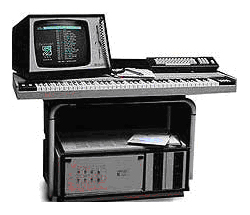In the beginning there was analog tape. And it was seen to be wholesome and healthy, and could be cut with a pair of scissors or a razor blade.
And thus there entered a new word into the producer’s vocabulary: editing. Which meant that we could tag together sections from different takes and, with some luck, turn a so-so performance into a potential hit.
But analog tape was not without its problems. In the analog era, we made tradeoffs: noise or distortion, bumps here or bumps there, limited frequency response or higher tape costs.
Edits could only be made at a limited number of angles, and as for changing your mind … no, there needed to be a better way.
Fast-forward to the late 1970’s and there are the New Barbarians: digital systems that enabled copying without noise and distortion and (let’s whisper it) unimagined creative possibilities.
Now edits could be made and remade freely, and sections copied to different locations. All in search of the elusive hit. In that respect, nothing changes.
Enter The DAW
Eventually, there emerged a one-stop solution: to basic digital recording and playback could be added sample-accurate editing, multichannel mixing and signal processing.
And so there came into being an all-in-one solution: the Digital Audio Workstation.
As many of us are now fully aware, the DAW did more than any other single development to dramatically revolutionize music production—not to mention film and video post, radio spot production or any other audio process requiring intensive editing.
Of the many five-cent definitions I could offer that capture the quintessential “essence” of the current-generation DAW, how about this:
“A Digital Audio Workstation is a computer-controlled system or networked collection of components that allows all of the major digital recording, processing, editing and replay functions to be controlled from a central location.
It also enables companion audio production tasks and functions — including, for example, the integration of MIDI information, or time code/sync data from an editing or synchronization system — to be coordinated from the same control surface.”
In addition to providing a fully integrated production environment – that ubiquitous “Studio in a Box” – digital systems offer many enhanced operational features of equal importance, including remappable control surfaces, full memorization of every control element, softkey assignments, improved speed of performing non-destructive edit sequences, and so on.
First-generation workstations were configured around a single or networked minicomputers that handled the digitization of audio sources; vectoring of the resultant 16/20/24-bit data to internal memory; hard-disk or optical storage; retrieval for real-time edit location, mixing and/or processing; and then replay of the manipulated audio from fixed or removable media.
However with the current generation of DAWs (due in no small part to the sophisticated microprocessor and support chip sets now available to digital designers), it makes more sense for desktop audio/video production systems to be configured as outboard digital processing whose specialized functions are controlled and coordinated by a central workstation running customized, multitasking software.
In this way, the central workstation controller (usually a Mac or PC) can be optimized for graphics display of the various recording, mixing and editing functions, while a series of high-speed “sub-engines” can perform the real-time audio processing, manipulation and timecode synchronization functions required for today’s complex sound and audio-for-multimedia productions.
Now, how did we arrive at this current DAW landscape, blossoming as it is with vibrant systems of all varieties—and, let’s face it, littered with the dry bones of now-extinct DAWs that could not evolve with sufficient speed.















